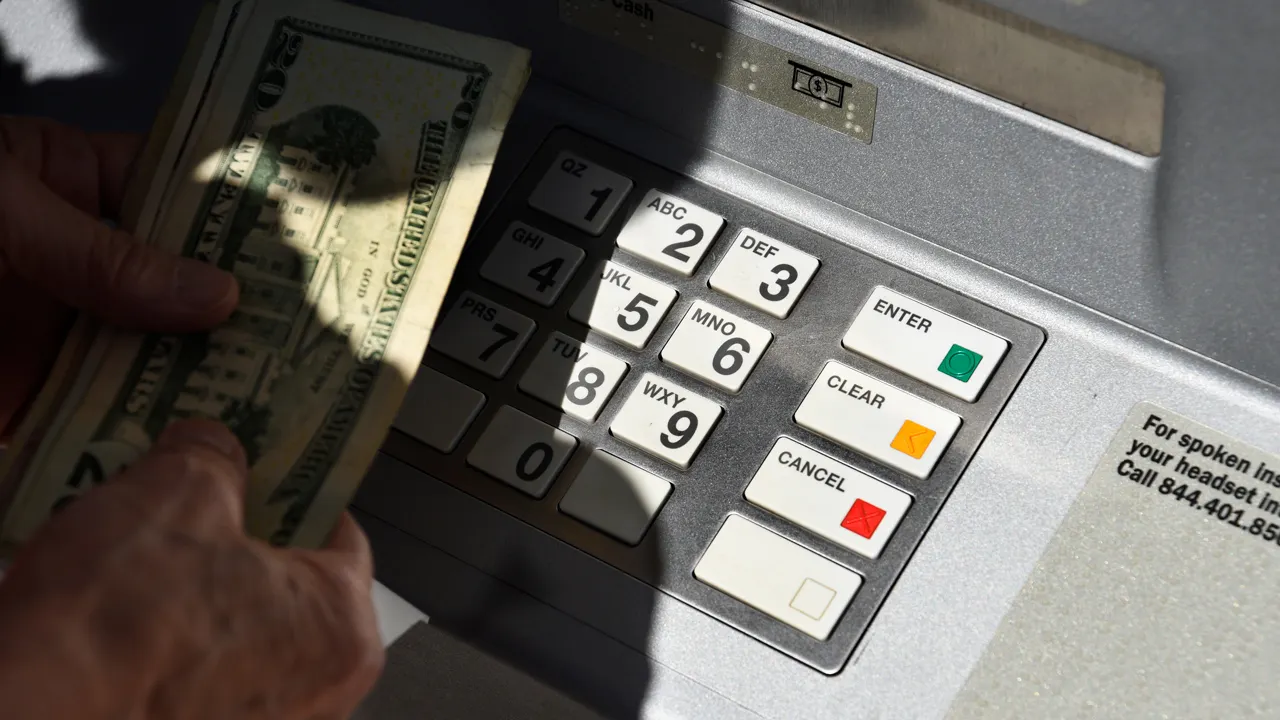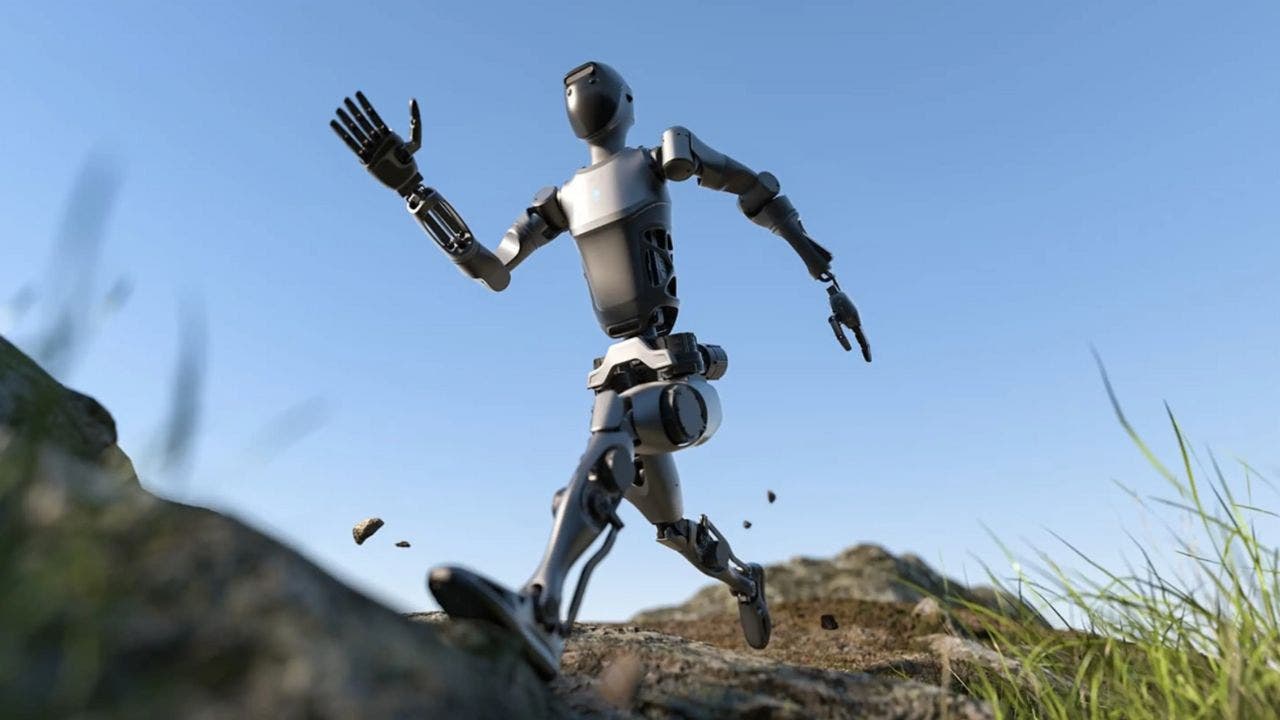If you live in Los Angeles, you are probably already intimately familiar with Watch Duty, the free app that shows active fires, mandatory evacuation zones, air quality indexes, wind direction, and a wealth of other information that everyone, from firefighters to regular people, have come to rely on during this week’s historic and devastating wildfires.
Technology
Your bank wants your voice. Just say no.

You already gave your bank your address, date of birth, Social Security number and your mother’s maiden name. Now, they want your voice.
Banks say it’s an extra layer of biometric protection against fraud and cybercrime. But with the rise of hackers stealing voice data for deepfakes, is it worth the risk?
You need a vacation. We’re giving away a $1,000 getaway gift card for your favorite airline. Enter to win now!
IT NEVER ENDS! WHAT TO DO AFTER A DATA BREACH
The identity arms race
No matter how much money you have in the bank, a hacker or scammer wants it — and they’re always one step ahead.
If you’re skeptical of your bank having your voice data on record, you’re not crazy — you’re smart. A voice can be cloned using AI with as little as 10 seconds of audio and a few bucks.
Asking your bank to opt you out of voice authentication is an easy way to secure yourself against potential AI cloning scams. (Photo by Sean Gallup/Getty Images)
Call your bank’s customer service line and ask to opt out of voice authentication. It takes two minutes. If you can do it now, great. If you can’t, I highly recommend you set a reminder to do it later. This is important.
Pro tip: Scammers have been known to plant fake numbers in search results. Don’t just Google search the name of your bank and call that number. Go directly to your bank’s website or call the number on the back of your debit or credit card.
YOUR KIDS MAY BE TREATING VIDEO GAMES LIKE BANKS AND PLAYING WITH REAL MONEY. THE GOVERNMENT HAS QUESTIONS
Go a step further
Because you’re smart, you use strong unique passwords, you enable 2FA, you don’t bank on public Wi-Fi, and you always monitor your accounts. (More on all that below if you need help.)

Other, more secure banking authentication features that don’t require your voice are available and easily accessible. (Photo by Robert Alexander/Getty Images)
But it might be worth a phone call or trip to your local bank branch to ask if they offer extra security features. Popular options include:
Secure keys: This physical or digital device generates one-time passcodes that are usually only good for 30 seconds for safer online banking.
Banking alerts: Set up text or email notifications for real-time account activities, such as large transactions or account changes. It’s a bit of a pain when you have to approve all your charges, but it has saved me from scams and phony charges.
Account lockout features: Many banks offer options to automatically lock your account after a certain number of failed online login attempts.
Advanced access: This is enhanced security for certain activities using additional verification steps. For example, Morgan Stanley asks me for a one-time passcode if I log in at a new location.
OWN A HOME? SHOPPING OR SELLING? YOU’RE A SCAM TARGET
Get your banking security up to par
Maybe you need to get the basics in order first. That’s OK, and it’s definitely not too late to take a couple smart steps.
- Turn on two-factor authentication so only you can access your accounts.
With 2FA enabled, a secondary form of verification is required to prove your identity instead of just entering your username and password to log in to an account.
The second form of verification can be something only you know (an answer to a question), something you have (your device), or who you are (a fingerprint, voice pattern or facial scan). You enter the temporary code, and voila — you’re in.
My pick: An authenticator app. Biometrics (your face or fingerprint scan) are a close runner-up. A text code is the most hackable.
- Only log onto your bank from a network you can trust.
Looking at you, random coffee shop Wi-Fi. Public Wi-Fi networks do little to nothing to protect your privacy. Cybercriminals know this and use free Wi-Fi networks to find victims. Malware, phony hotspots, unsecured networks and nefarious passers-by might all be able to cut in, compromising your data and account.
If you connect to public Wi-Fi without taking precautions, thieves can steal login credentials to any account you sign into while on the network, including your bank accounts.

If you connect to public Wi-Fi, don’t do it without a VPN. (Photo by Saqib Majeed/SOPA Images/LightRocket via Getty Images)
If you must connect to free public Wi-Fi, don’t do it without a virtual private network (VPN). A VPN allows you to browse the internet while encrypting your sensitive information. This helps hide your online credentials and IP address.
I use ExpressVPN, a sponsor of my national radio show.
Now, help me get the word out. Share this story with friends and family to keep them safe before the tsunami of voice-cloning scams hits. They’re coming.
Get tech-smarter on your schedule
Award-winning host Kim Komando is your secret weapon for navigating tech.
Copyright 2024, WestStar Multimedia Entertainment. All rights reserved.

Technology
How Watch Duty’s wildfire tracking app became a crucial lifeline for LA
/cdn.vox-cdn.com/uploads/chorus_asset/file/25824833/STKB309_WATCH_DUTY_B.jpg)
Watch Duty is unique in the tech world in that it doesn’t care about user engagement, time spent, or ad sales. The 501(c)(3) nonprofit behind it only cares about the accuracy of the information it provides and the speed with which the service can deliver that information. The app itself has taken off, rocketing to the top of Apple’s and Google’s app stores. Over 1 million people have downloaded it over the last few days alone.
The elegance of the app lies in its simplicity. It doesn’t scrape user data, show ads, require any kind of login, or track your information. Its simple tech stack and UI — most of which is maintained by volunteer engineers and reporters — has likely helped save countless lives. While Watch Duty is free to use, the app accepts tax-deductible donations and offers two tiers of membership that unlock additional features, like a firefighting flight tracker and the ability to set alerts for more than four counties.
With plans to expand the service across the United States, as well as overseas and into other emergency services, Watch Duty may eventually replace some of the slower and less reliable local government alert systems for millions of people.
Photo by Lokman Vural Elibol / Anadolu via Getty Images
An app born from fire
The idea for Watch Duty came to cofounder John Mills while he was trying to protect his off-grid Sonoma County home from the Walbridge fire in 2020. He realized there wasn’t a single source for all the information people needed to protect themselves from the blaze, which ultimately killed 33 people and destroyed 156 homes. John and his friend David Merritt, who is Watch Duty’s cofounder and CTO, decided to build an app to help.
“This came out of an idea that John had, and he talked to me about it four years ago,” Merritt tells The Verge. “We built the app in 60 days, and it was run completely by volunteers, no full-time staff. It was a side project for a lot of engineers, so the aim was to keep it as simple as possible.”
Fire reporting is piecemeal at best in fire-prone areas and frequently scattered across platforms like Facebook and X, where fire departments and counties have verified pages sharing relevant updates. But increasingly, social media platforms are putting automated access for alert services behind paywalls. Governments also use a wide variety of alert systems, causing delays that can cost lives, especially in fast-moving fires like the Palisades and Eaton fires that have forced evacuations for more than 180,000 people. And sometimes, these government-run alerts are sent out mistakenly, causing mass confusion.
Watch Duty simplifies all that for millions of people.
“We view what we are doing as a public service,” says Merritt. “It is a utility that everyone should have, which is timely, relevant information for their safety during emergencies. Right now, it’s very scattered. Even the agencies themselves, which have the best intentions, their hands are tied by bureaucracy or contracts. We partner with government sources with a focus on firefighting.”
“We view what we are doing as a public service.”
One of the biggest issues around fires, in particular, is that they can move quickly and consume large swaths of land and structures in minutes. For example, the winds that drove the Palisades fire to spread to more than 10,000 acres reached 90 miles per hour on Tuesday. When minutes matter, the piecemeal alert system that Watch Duty replaces can cause delays that cost lives.
“Some of the delivery systems for push notifications and text messages that government agencies use had a 15-minute delay, which is not good for fire,” says Merritt. “We shoot to have push notifications out in under a minute. Right now, 1.5 million people in LA are getting push notifications through the app. That’s a lot of messages to send out in 60 seconds. In general, people are getting it pretty much all at the same time.”
A simple tech stack
For Watch Duty, this kind of mass communication requires reliable technology as well as a group of dedicated staff and skilled volunteers. Merritt says that Watch Duty relies on a number of corporate partners with whom it has relationships and contracts to provide its service.
“We shoot to have push notifications out in under a minute.”
The app is built on a mix of technology, including Google’s cloud platform, Amazon Web Services, Firebase, Fastly, and Heroku. Merritt says the app uses some AI, but only for internal routing of alerts and emails. Reporters at Watch Duty — those who listen to scanners and update the app with push notifications about everything from air drops to evacuation updates — are mostly volunteers who coordinate coverage via Slack.
“All information is vetted for quality over quantity,” he says. “We have a code of conduct for reporters. For example, we never report on injuries or give specific addresses. It’s all tailored with a specific set of criteria. We don’t editorialize. We report on what we have heard on the scanners.”
According to Merritt, the app has 100 percent uptime. Even though it started with volunteer engineers, the nonprofit has slowly added more full-time people. “We still have volunteers helping us, but it’s becoming more on the internal paid staff as we grow, as things get more complex, and as we have more rigorous processes,” he says.
“All information is vetted for quality over quantity.”
He says there are no plans to ever charge for the app or scrape user data. The approach is kind of the Field of Dreams method to building a free app that saves people’s lives: if you build it well, the funding will come.
“It’s the antithesis of what a lot of tech does,” Merritt says. “We don’t want you to spend time in the app. You get information and get out. We have the option of adding more photos, but we limit those to the ones that provide different views of a fire we have been tracking. We don’t want people doom scrolling.”
Photo by FREDERIC J. BROWN / AFP via Getty Images
Collecting information in the era of Trump
Watch Duty relies heavily on publicly available information from places like the National Weather Service and the Environmental Protection Agency. Should the incoming Trump administration decide to execute on threats to dismantle and disband the EPA (which monitors air quality) and the National Oceanic and Atmospheric Administration, the parent agency to the National Weather Service, such moves would impact Watch Duty’s ability to operate.
Even still, Merritt is optimistic. “We will be pretty well insulated from any change to policy,” he says. “We are either buying that information ourselves already or we are happy to buy it, and we will take that cost on. The fact that we’re soon going to be covering the entire US will defray the cost of anything that shifts from a policy perspective. Our operation costs are mostly salaries. We are trying to hire really good engineers and have a really solid platform. If we need to raise a grant to buy data from the National Weather Service, then we will.”
Regardless of what the next administration does, it’s clear that Watch Duty has become a critical and necessary app for those in Southern California right now. The app currently covers 22 states and plans to roll out nationwide soon.
“We got 1.4 million app downloads in the last few days,” according to Merritt. “I think we have only received 60 support tickets, so that shows that something is working there. We are really just focused on the delivery of this information.”
Technology
China’s newest humanoid robot is ready to serve like never before

Chinese startup Pudu Robotics has unveiled its latest creation, the D9 humanoid robot, designed to revolutionize the way we work and interact with machines.
Standing at an impressive 5.57 feet tall, this bipedal machine is not just another robot — it’s a versatile assistant ready to tackle a wide range of tasks in various settings.
D9 humanoid robot. (Pudu Robotics)
Capabilities and features of the humanoid robot
The D9 is no ordinary robot. With its ability to walk upright and carry loads up to 44 pounds, it’s built to handle real-world challenges. But what sets it apart from its predecessors?
I’M GIVING AWAY THE LATEST & GREATEST AIRPODS PRO 2
Advanced mobility: The D9 can walk at speeds of up to 4.5 mph, outpacing the average human stroll. It’s not just about speed, though. This robot can navigate stairs, slopes and even maintain balance when knocked off-kilter.
Intelligent navigation: Equipped with high-accuracy sensors, the D9 creates real-time 3D semantic maps of its surroundings. This allows for autonomous route planning and precise self-positioning.
Versatile applications: From performing ground cleaning tasks with the Pudu SH1 to carrying boxes in warehouses and stocking shelves in stores, the D9’s potential applications are vast.
Natural interaction: Perhaps most impressively, the D9 boasts “human-level multimodal natural interactions,” thanks to its sophisticated artificial intelligence processing frameworks.

D9 humanoid robot. (Pudu Robotics)
AI-POWERED ROBOT SINKS SEEMINGLY IMPOSSIBLE BASKETBALL HOOPS
The evolution of Pudu robotics
The D9 isn’t Pudu’s first foray into robotics. In September, they introduced the D7, a semi-humanoid robot on wheels designed for tasks like sorting components, serving in restaurants and operating elevators. The D9 builds on this foundation, expanding the range of possible applications.
WHAT IS ARTIFICIAL INTELLIGENCE (AI)?

D9 humanoid robot. (Pudu Robotics)
CHINESE HUMANOID ROBOT COULD BE THE FUTURE OF AFFORDABLE IN-HOME CARE
Competitive landscape
With the introduction of the D9, Pudu Robotics enters a competitive field alongside giants like Tesla and Unitree. While pricing details for the D9 are yet to be announced, it’s speculated to fall in the $20,000 to $30,000 range, similar to Tesla’s Optimus.

D9 humanoid robot. (Pudu Robotics)
ELECTRIC HUMANOID ROBOT POISED TO SHAKE UP THE JOB MARKET
Kurt’s key takeaways
The Pudu D9 showcases advanced mobility and intelligent interaction capabilities. As it prepares to enter the market, its potential impact on various industries could be profound, transforming how we approach tasks across sectors. The future looks promising for humanoid robots like the D9 as they pave the way for more efficient and interactive work environments.
What concerns do you have about the potential impact of humanoid robots like the Pudu D9 on the future of work and everyday life? Let us know by writing us at Cyberguy.com/Contact
For more of my tech tips and security alerts, subscribe to my free CyberGuy Report Newsletter by heading to Cyberguy.com/Newsletter
Ask Kurt a question or let us know what stories you’d like us to cover.
Follow Kurt on his social channels:
Answers to the most-asked CyberGuy questions:
New from Kurt:
Copyright 2025 CyberGuy.com. All rights reserved.
Technology
Intel still dreams of modular PCs — it brought a tablet laptop gaming handheld to CES
/cdn.vox-cdn.com/uploads/chorus_asset/file/25826491/PXL_20250106_223233485.jpg)
At CES 2025, Intel let journalists into its private “Innovation Showcase,” where we saw things like prototype next-gen laptops and giant stereo 3D handheld gaming PCs.
While I was there, I also spotted a heavy metal handheld on a table that didn’t seem… fully attached… to its screen. When I lifted the screen, it came away easily.
It felt suspiciously light to be a real tablet, so I flipped it over and saw three connectors underneath:
Above it, on a shelf, was a laptop with a suspiciously sized chunk of plastic on the bottom that looked like a perfect match. A minute later, Intel gaming evangelist Colin Helms confirmed: I was looking at a concept modular PC.
That module contains a complete Intel Lunar Lake computer, the entire guts you’d need to make one work outside of peripherals and screen. It’s basically a reboot of Intel’s abandoned Compute Card idea, except it’s not all Intel’s doing and you probably shouldn’t ever expect it to ship.
It’s a concept from Quanta, a company whose name you don’t typically see on the laptops and tablets they create, because Quanta is an ODM (like Compal, Pegatron, Wistron, and Apple’s better known iPhone supplier Foxconn) that designs and manufactures hardware on behalf of brand names.
Quanta’s calling the whole modular system the “AI8A,” and the aforementioned module at its heart is the “Detachable AI Core.” Helms told me it plugs into other concept computers as well, including an all-in-one desktop that Intel didn’t have to show off. And presumably, like the Compute Card idea, you could upgrade your computer just by putting a new new module into it.
The modular laptop has lots of concept-y bells and whistles too, so many that Intel’s CES staff hadn’t even worked them all out yet.
For starts, the laptop has a motorized hinge, so you can tell it to open and close its own lid; it also claims to offer eye-tracking that lets you sling around multitasking windows just by looking at where you’d like them to be. It apparently comes with a mouse integrated into a ring that you could wear.
The most mundane: a built-in Qi wireless charging pad in the palmrest, with indicator lights to show your battery’s remaining capacity.
I couldn’t try any of it working, unfortunately, nor did I manage to ask what “AI8A” means, because I mistakenly thought it said Aiba until I checked my photos closely just now. Nor could we hotswap the module between the handheld and laptop, since the module apparently doesn’t have a battery inside.
Again, this is a cool computing concept car: it’s not likely that this computer will ever ship, even in a more practical / less gadgety form. Thankfully, we have begun to see some real, practical modularity in the laptop space since the death of Intel’s Compute Card. Framework just celebrated its fifth anniversary this week, and Dell took a smaller step forward at CES with its first modular repairable USB-C port.
Photos by Sean Hollister / The Verge
-

 Politics1 week ago
Politics1 week agoNew Orleans attacker had 'remote detonator' for explosives in French Quarter, Biden says
-

 Politics1 week ago
Politics1 week agoCarter's judicial picks reshaped the federal bench across the country
-

 Politics1 week ago
Politics1 week agoWho Are the Recipients of the Presidential Medal of Freedom?
-

 Health6 days ago
Health6 days agoOzempic ‘microdosing’ is the new weight-loss trend: Should you try it?
-

 World1 week ago
World1 week agoSouth Korea extends Boeing 737-800 inspections as Jeju Air wreckage lifted
-
/cdn.vox-cdn.com/uploads/chorus_asset/file/25822586/STK169_ZUCKERBERG_MAGA_STKS491_CVIRGINIA_A.jpg)
/cdn.vox-cdn.com/uploads/chorus_asset/file/25822586/STK169_ZUCKERBERG_MAGA_STKS491_CVIRGINIA_A.jpg) Technology2 days ago
Technology2 days agoMeta is highlighting a splintering global approach to online speech
-

 World1 week ago
World1 week agoWeather warnings as freezing temperatures hit United Kingdom
-

 News1 week ago
News1 week agoSeeking to heal the country, Jimmy Carter pardoned men who evaded the Vietnam War draft















